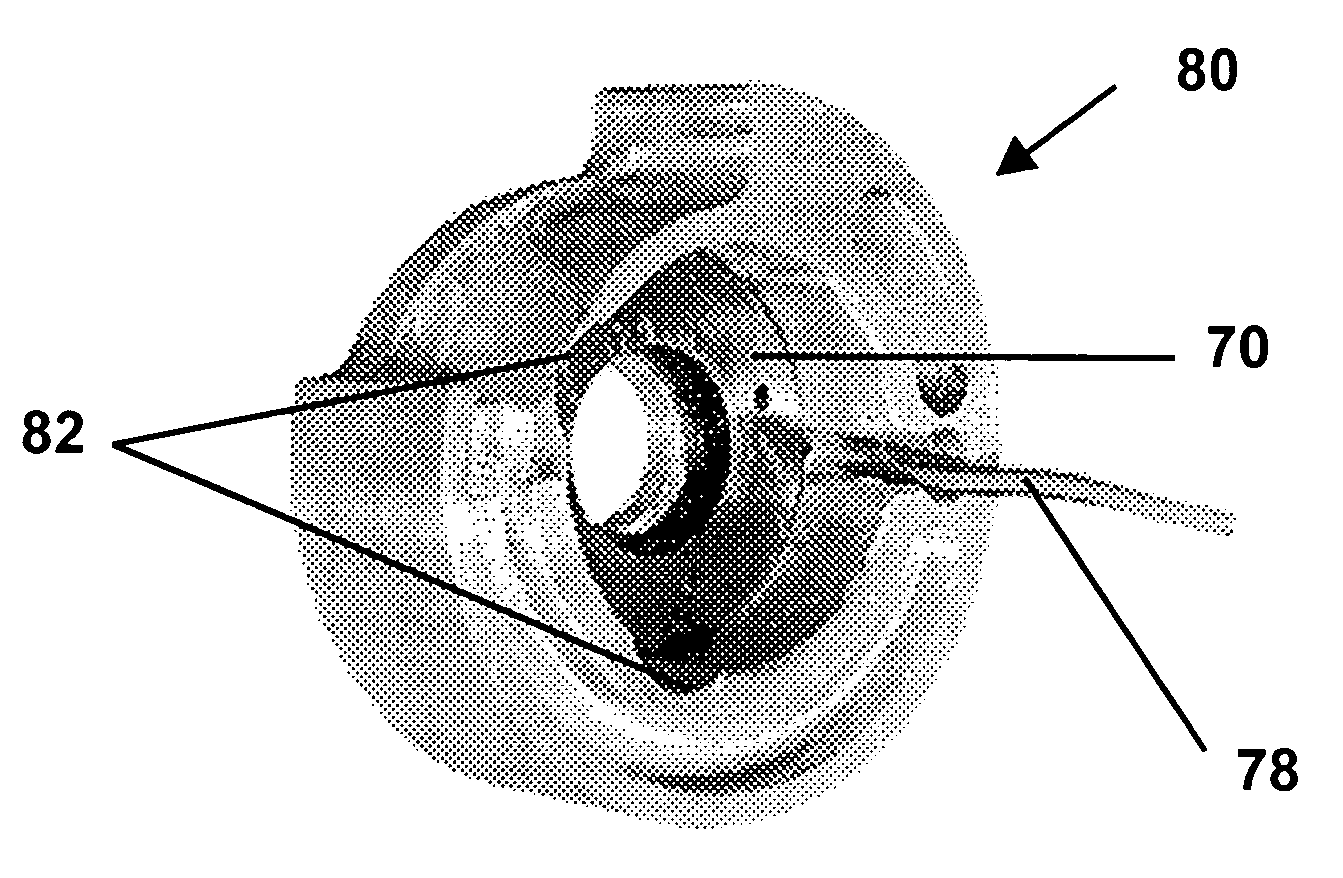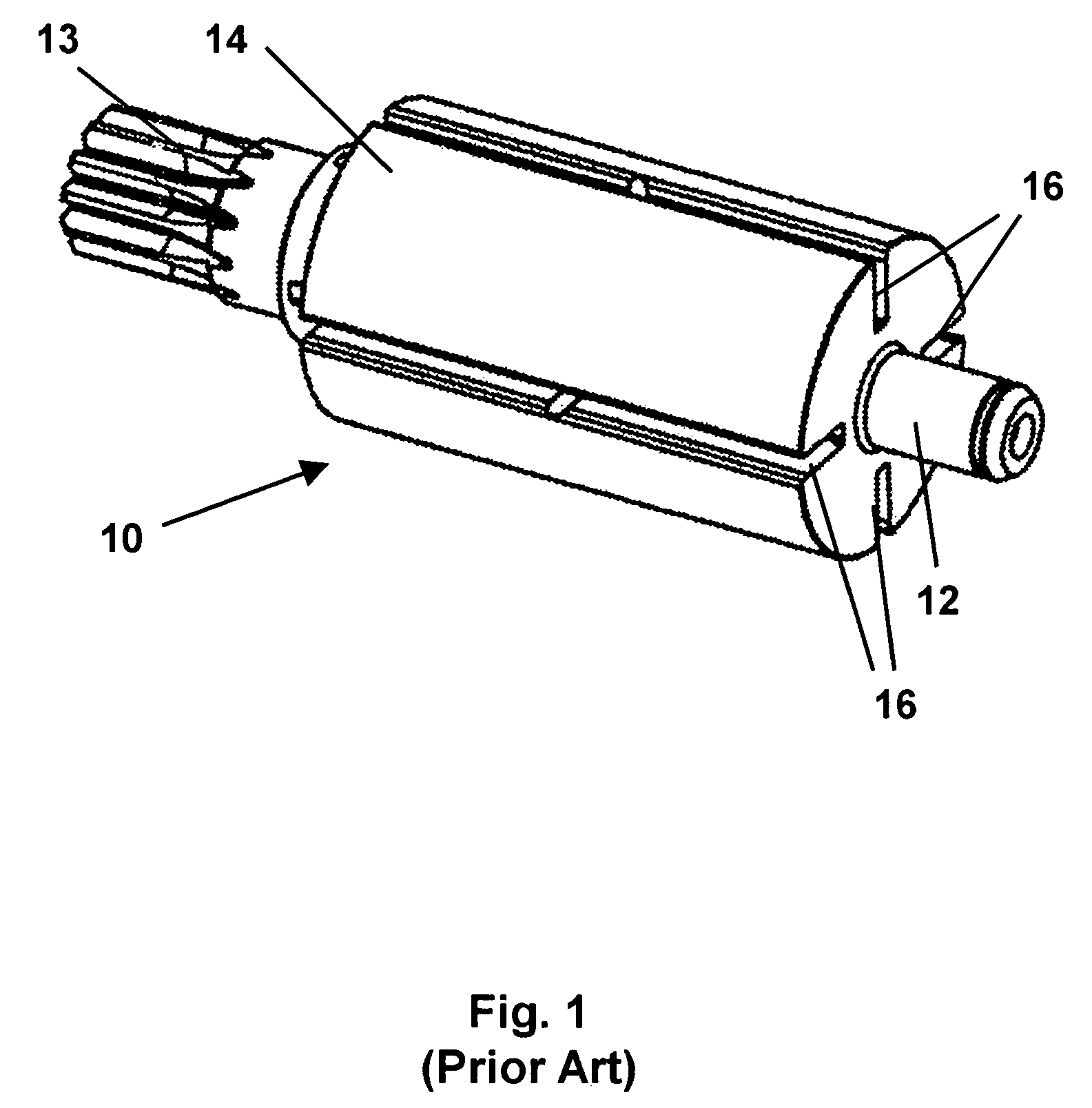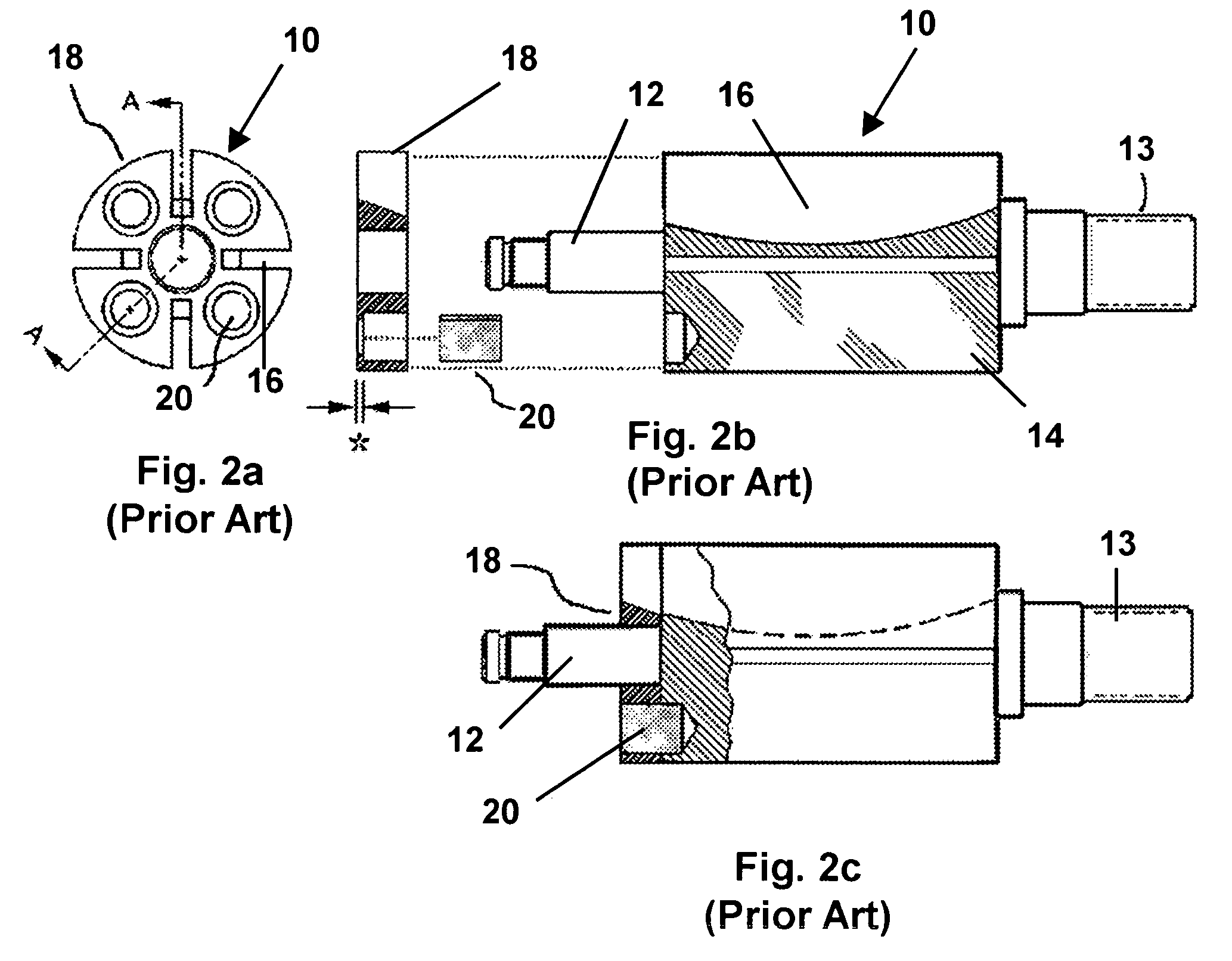Pneumatic tool with integrated electricity generator
a technology of integrated electricity and generators, applied in the direction of electric generator control, magnetic circuit shape/form/construction, magnetic circuit rotating parts, etc., can solve the problems of tool itself placing constraints, machining special rotors in order to accommodate magnets, and time-consuming and accordingly expensive stators
- Summary
- Abstract
- Description
- Claims
- Application Information
AI Technical Summary
Benefits of technology
Problems solved by technology
Method used
Image
Examples
Embodiment Construction
[0030]A conventional pneumatic tool is comprised of a casing onto which is connected a fluid hose. The fluid hose conducts compressed fluid, such as air, from a source through the casing of the tool, causing a rotor within the motor housed by the casing to rotate by effecting force on vanes on the rotor. The rotor, in turn, causes force to be transmitted from a pinion on the rotor through planetary gearing, to drive a ratchet of a wrench, abrasive disk of a grinder etc. at a working end of the tool. While some pneumatic tools make use of gearing in order to transmit rotational force to the working end of the tool, others do so simply by employing a threaded shaft and a collet, or other means appropriate to the primary application of the tool.
[0031]FIG. 1 is a perspective view of a rotor 10 for a conventional pneumatic tool. Rotor 10 comprises a shaft 12 upon which is affixed a rotor body 14. Shaft 12 has formed therein gear teeth 13 for enabling shaft 12 to transmit rotational force...
PUM
| Property | Measurement | Unit |
|---|---|---|
| nonmagnetic | aaaaa | aaaaa |
| length | aaaaa | aaaaa |
| circumference | aaaaa | aaaaa |
Abstract
Description
Claims
Application Information
 Login to View More
Login to View More - R&D
- Intellectual Property
- Life Sciences
- Materials
- Tech Scout
- Unparalleled Data Quality
- Higher Quality Content
- 60% Fewer Hallucinations
Browse by: Latest US Patents, China's latest patents, Technical Efficacy Thesaurus, Application Domain, Technology Topic, Popular Technical Reports.
© 2025 PatSnap. All rights reserved.Legal|Privacy policy|Modern Slavery Act Transparency Statement|Sitemap|About US| Contact US: help@patsnap.com



